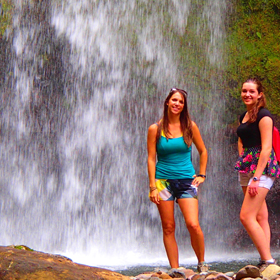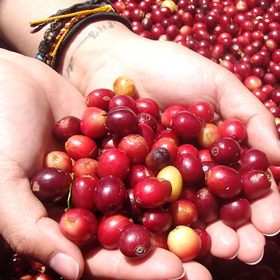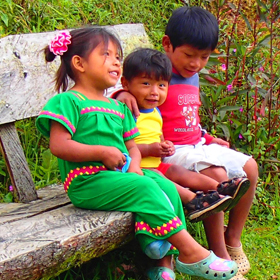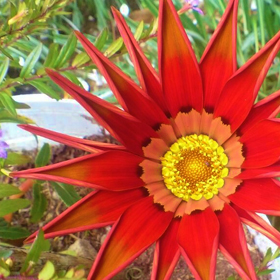FAQs – Travel in Panama // Frequently Asked Questions
Frequently Asked Questions
- Do I need a visa to enter Panama?
- Will I be ok if I only speak English?
- How is the food in Panama?
- Drinking in Panama?
- What about money in Panama?
- How is shopping in Panama?
- Where will I sleep in Panama?
- How will I stay healthy?
Where are you located?
We are located in Boquete, Panama. Boquete is a small mountain town set in the highlands and mountains of the Chiriqui Province in western Panama, bordering Costa Rica. To get to Boquete, you can take a frequent 8-hour bus ride from the Albrook Bus Station in Panama City to David ($15-21). From David, take one of the many old school buses entitled “Boquete” for the 1-hour ride to Boquete ($1.75). More information about getting to Boquete.
Do I need a Visa to enter Panama?
It depends on your nationality. Citizens from the following countries DO NOT need a visa to enter Panama because their countries hold treaties with Panama that entitle their citizens to visit for up to 180 days without a visa: Andorra, Angola, Antigua y Barbuda, Arabia Saudita, Argentina, Armenia, Austria, Australia, Bahamas, Barbados, Belize, Belarus, Belgium, Botsuana, Bhutan, Brazil, Bolivia, Bosnia and Herzegovina, Brunei Darussalam, Bulgaria, Cape Verde, Cambodia, Canada, Czech Republic, Chile, China, Colombia, Comoros, Costa Rica, Croatia, Cyprus, Denmark, Dominica, Ecuador, El Salvador, Egypt, Fiyi, Estonia, Finland, France, Gabon, Germany, Georgia, Gibraltar, Granada, Greece, Guatemala, Guyana, Holland, Honduras, Hong Kong, Hungary, Iceland, Italy, Ireland, Israel, Japan, Jamaica, Kenia, Kiribati, Latvia, Lebanon, Lithuania, Kuwait, Letonia, Liechtenstein, Luxembourg, Macao, Macedonia, Madagascar, Malaysia, Maldivas, Malta, Marshall Islands, Mauritius, Micronesia, Mexico, Moldovia, Monaco, Mongolia, Montenegro, Namibia, Nauru, Netherlands, New Zealand, Nicaragua, North Korea, Norway, Palaos, Papua New Guinea, Paraguay, Peru, Poland, Portugal, Qatar, Romania, Saint Kitts y Nevis, Saint Lucia, Salomon Islands, Samoa, São Tomé and Príncipe, San Marino, Serbia, Seychelles, Singapore, Slovak Republic, Slovenia, South Africa, South Korea, Spain, Sweden, Switzerland, Thailand, Tonga, The Vatican, Trinidad and Tobago, Turkey, Tuvalu, Ukraine, United Arab Emirates, United Kingdom, United States, Uruguay, Vanuatu, Venezuela and Vietnam.
This usually also applies to people of other nationalities (India, for example), if they have a residence permit issued by any of the above countries. For example, an Indian living in the USA will be able to enter Panama without any visa. However, it is advisable to check with closest representation of Panama embassy near your place of residence.
Citizens from these countries can apply for an extension for up to another 30, 60 or 90 days. Petitions are approved or denied on a case-by-case basis. Immigration recommends you apply at least a week before your time is up. For more information about extending your stay in Panama please read on or click here.
They can always also leave the country for 3 days (Costa Rica is right next to Bocas del Toro and Boquete so it’s easily done) and then come back and get 180 days more.
Citizens from all other nationalities either need a Tourist Card or some other type of Visa.
More entry requirement information.
Countries whose citizens have passports valid for at least 6 months upon entry do not require a visa to enter Panama include (amongst others) Andorra, Argentina, Austria, Belgium, Bolivia, Brazil, Germany, Ireland, Israel, Malta, Netherlands, Portugal, San Marino, Singapore,Sweden, Switzerland, United Kingdom and Uruguay.
Citizens of some countries, Australia, Canada, Japan and US citizens included, may enter Panama with a tourist visa that is stamped on arrival (the cost is automatically included in your airfare and is valid for a 180-day stay as of August 2010). The cost is $13 (US) for a visa stamp to enter at Bocas del Toro, when arriving by airplane, as of September 2012. Entry requirements are proof of:
- a return ticket out of Panama
- proof of accommodation-if you don’t have it they will make you go back to the terminal and book it online
- Recommended vaccination for yellow fever–only if coming from a country where yellow fever occurs (includes most of South America and Africa but not USA).
In practice, border officials may be lax about checking clean-cut travelers coming from the USA or other developed countries.
Also, because your tourist visa will be stamped in your passport, it is important to carry at least a photocopy of the ID page AND the page with the tourist visa stamp at all times.
Back to Top
Will I be ok if I only speak English?
Much of the Caribbean Coast of Panama was settled by people from Jamaica and Barbados. More recently, the descendants of those settlers seem to be speaking more Spanish, but a lot of them still speak English, albeit a very Caribbean variety, called Guari Guari.
Until only a few years ago, the canal was controlled by the USA. The US has given the canal back to Panama, but many people in Panama City and other areas near the canal still speak English as a first or second language. Surprisingly, English is not as common as you would think for how long the Americans spent in the country. It’s not very common for people working in shops or people in the street to speak English. There are a number of English News and Blog sites to help with your travels.
Back to Top
How is the food in Panama?
In the larger cities you can find all types of food ranging from the French haute cuisine to the freshest sushi. There are Arabic restaurants, Italian, Chinese, Indian, Mexican… whatever you’re in the mood for. More information about food and drink in Panama.
Outside of the cities, the selection is largely Panamánian with bountiful seafood and beef due to the abundance of cattle farms and the fantastic fishing in the area. Panamanian cuisine is a mix of several cultures. Reminiscent of the country’s Afro-Caribbean, French and Spanish influences, the dishes take on a complete character of their own. If you get tired of eating beans or gallo pinto in the rest of Central America, you might want to head towards Panama. Since Panama has a little more Caribbean influence than other Central American countries, you’ll see a lot more plaintain than beans here. Most dishes are served with coconut rice and a type of squash or other native vegetable. If Panamanian food has to be summed up in one word, that word would be culantro, which is a local plant that tastes like cilantro, except that it has a much stronger flavor.
A typical plate in a humble, family restaurant can range from $1.25 up to 5.00, including your choice of meat: mondongo (beef stomach), fried or baked chicken, pork, beef and sometimes fried fish; rice, beans, salad: cabbage, carrot & mayonnaise; beet salad; green salad; potato or macaroni salad; and patacones (fried green plantains). The Panamanians also enjoy their “chichas” (fruit, water & sugar), of which there is always a selection, ranging from tamarindo, maracuya (passionfruit), mango, papaya, jugo de caña (sugar cane juice), or agua de pipa (juice from young green coconuts). If you like your food picante, Panama may not be the place for you. They definitely have several hot sauces, but the emphasis is not on the heat.
Back to Top
Drinking in Panama?
National beers are produced (Balboa, Atlas, Soberana, Panamá), but don’t measure up to a good import or excellent local craft Beer like La Rana Dorada. La Rana Dorada is probably the best of the domestic brands, however, Atlas is the most commonly purchased; many women favor Soberana. Beer can cost as low as .30/cents per 12 oz. can in a supermarket or anywhere from $ .50 in a local town bar up to $2.50 in upscale bars.
Carta Vieja and Ron Abuelo are the main domestically produced rum. Seco, a very raw white rum, is the national liquor. Seco con leche (with milk) is a common drink in the countryside.
Back to Top
What about money in Panama?
Panama has used the US Dollar as its only currency since 1904 although Panamanians often refer to it as Balboa. If you’re from the US, the only oddity about Panama will be change. Panama mints its own coins in the same weights and sizes as US coinage, but with Panamanian stampings. Because a legal treaty (1904) between US and Panama the Panamanian coinage is completely interchangeable with standard US coinage in Panama. You may get a handful of change back with a conquistador on the quarter and an Indian on one of your pennies, but Lincoln on the other penny and Roosevelt on the dime. Panama also still mints half dollars. You may hear these half dollars called pesos, so don’t think you’ve accidentally ended up in Mexico.
Panama’s coins are made by the US Mint. Incidentally, if you run short on change in the United States, Panamanian coins work in parking meters, payphones, vending machines, etc.
You can typically use a credit card at all hotels in the capital, as well as medium-sized regional cities (David, Las Tablas, Colon, Santiago, Bocas del Toro, etc.). Restaurants, grocery stores, and department stores in major cities will also usually take credit, or even debit cards. However, outside the capital using your card could be difficult.
Though Panamanian ATMs function on the Cirrus/Plus system, they may not take cards with the Interlink symbol. Make sure you’re carrying a lot of cash (especially small bills) and understand how to take cash advances out on your credit card. MAESTRO cards do not work in ATMs in Panama (February 2013) Traveller’s checks are not widely used.
Many businesses do not accept US$50 or US$100 bills at all. Most of those that do will ask for your passport and store your data/serial numbers of your notes in a special book. The reason is that many US$50 and US$100 bills have been counterfeited.
There are 91 banks in Panama. Opening hours vary widely from bank to bank. On weekdays, all banks are open until at least 3PM, and some until 7PM On Saturdays many banks are open until noon, and some branches located in shopping centers are also open on Sundays. Note that most banks will not allow you to enter wearing shorts and/or flip-flops.
Back to Top
How is shopping in Panama?
Panama is home to the hemisphere’s largest free trade zone, the Colon Free Zone. There are also a number of large, American-style malls, such as Multicentro, Albrook Mall, Multiplaza Pacific, and the latest Metromall. However, prices vary widely from mall to mall – Albrook is quite cheap, while Multiplaza is home to designer boutiques and very high prices. Generally Panama is a good place to buy consumer electronics, clothing and cosmetics. But you will not find better selection or prices than in the US, most cheap cloth stores sell stuff that are leftovers and out dated stuff that in the US doesn’t sell anymore. Electronics usually are 20-50$ more expensive than the US.
Traditional Panamanian crafts can be found most cheaply at artesania markets, such as the YMCA in Balboa and the market in Panama Viejo. In Panama City, the best handicrafts can be found at REPROSA. Panama’s best-known craft is the mola, intricate reverse-applique handwork made by the Kuna. Molas can also be bought from vendors on the seawall in Casco Viejo. Other Panamanian crafts include carved tagua nuts, cocobolo carvings of animals, and woven palm-fiber baskets. There is a smaller craft market in El Valle, which specializes in soapstone carvings and other central Panamanian crafts.
Back to Top
Where will I sleep in Panama?
Panama’s hotel accommodations are as diverse as its geography. Panama City has as much glamour and glitz as New York City, without the high price tag. You can find 5 star high rise hotels in the heart of downtown; or you can venture out to the smaller neighborhoods, where old Canal military barracks have been converted into B&B’s. In terms of an authentic Panama experience, the historic district of Casco Viejo provides the charm of yester-year with modern amenities of today.
Bocas del Toro has your typical island cabanas and small hotels, some literally right on the water (similar to the cabanas in Bali). In the western highlands, around Boquete, there are hostels for $11 a night, and 5 star hotels for $300+ a night. No high rises here, but small very artsy boutique hotels and casitas in a quaint mountain town.
Back to Top
How will I stay healthy?
Panama is well known for its excellent medical care, making it a recent hot spot for medical vacations. More health and safety information.
Yellow fever vaccination is recommended for all visitors over 9 months of age travelling to the provinces of Darien, Kunayala (San Blas) and Panama, excluding the Canal Zone. Most countries require proof of yellow fever vaccination before permitting travelers to enter from Panama.
The U.S. Centers for Disease Control state that risk of malaria exists in rural areas of Bocas del Toro, Darién, and San Blas provinces; no risk in Panama City or in the former Canal Zone as well as Boquete. NB: Chloroquine is no longer effective for San Blas Province.
Dengue fever is endemic in the province of Darien.
Tap water is safe in virtually all cities and towns, with the exception of Bocas del Toro, where bottled water is recommended.
Female travelers should be aware that the moisture and heat of the tropics can encourage yeast infections. 3-day and 5-day treatment courses are available in pharmacies, but must be purchased from the pharmacist.
There are many hospitals that can give tourists first class attention. Many can take international insurance policies, though your insurance company may require you to pre-pay and submit a claim form. Verify with your company prior to travel what the requirements are for filing a foreign claim, as you will not typically be provided with a detailed receipt (one that includes diagnosis and treatment codes) unless you ask for it. Here are some of the best ones in Panama City:
- Hospital Nacional – State-of-the-art private hospital located on Avenida Cuba, between street 38 and 39, Tel. 207-8100.
- Clinica Hospital San Fernando
- Hospital Paitilla is a well-equipped hospital where Panama’s wealthy upper class traditionally have gotten there medical services.
- Punta Pacifica Hospital is a newly-opened hospital near Multiplaza Mall and is now managed by Johns Hopkins International. It is attracting some doctors away from Paitilla.
- Hospital Santo Tomas is considered by many emergency doctors and medical professionals to be the best for trauma care due to the volume of their trauma patients. Much like Cook County Hospital in Chicago, Santo Tomas medical teams see many types of trauma each day and are well equipped to handle these cases. Once a patient is triaged, they can be moved to a private facility.
Farmacia Arrocha, a drugstore chain, has branches throughout the country. Gran Morrison department stores also often operate pharmacies.
The new 911 system is now operational for medical emergencies only. Most coverage is in and around Panama City. However, during major holidays or national festivals, 911 units are stationed around the country especially in Las Tablas, David, Chitre, and Santiago.
Medical evacuation flights are not as organized as in the EU, Canada, and the US. Until a dedicated helicopter emergency service is operational, the only choice for fast evacuation from the interior is to charter either a small plane or helicopter capable of holding a litter. Charges are billed to a credit card or paid in cash. Contact charter aircraft companies for a quotation. Typically, a medical flight on a small twin-engined plane from David to Panama City will cost $4,000. Helicopters are significantly more. A new private membership air medical transport service is now available. Tourist memberships are $10 for 90 days coverage.
Evacuation flights out of the country are normally provided by air ambulance services from Miami and range from $18,000 to over $30,000 depending on the patient’s medical needs.
Travelers with a prior medical condition, or who are at risk, should check their insurance coverage for these flights. Do not assume that a credit card’s travel insurance will cover the cost. Many only cover up to $1,000.
Personal cleanliness and sanitation: The bathrooms in even the most remote areas and smallest restaurants of the country are amazingly clean and well-kept. They far exceed most North American public facilities in this respect. In most areas, the standard practice is to throw toilet paper into the provided bin – not the toilet. Most remote areas do not have the proper septic systems to handle toilet paper waste. This is especially true along the Pacific and Caribbean coastal areas.
(Information from Wikitravel is provided solely as a guide).





